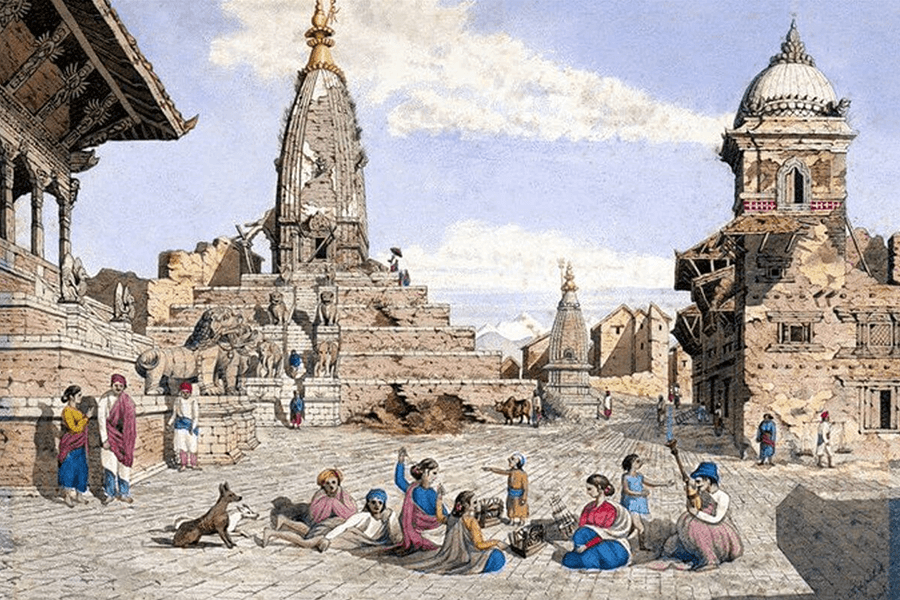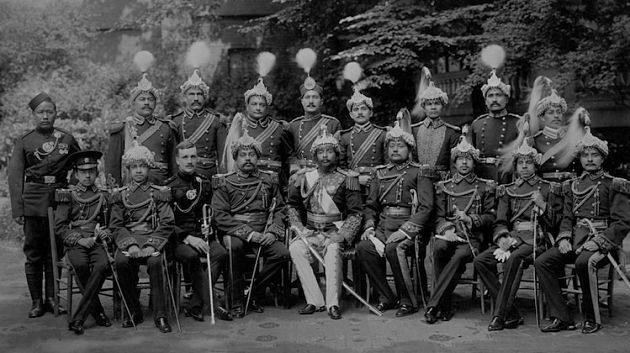Enjoying Nepal tours, you perhaps, want to get an insight into the history of Nepal. However, it merely impossible as there will be lots of things you have to know like the story behind the attractions you visit. So, I would like to create this article to give you a brief introduction to Nepal’s history. Hope you like it.
Nepal History
Prehistory of Nepal
Although having some large gaps, the coherent dynastic history of Nepal Valley has been still possibly existed. It is said that, though the earlier Kirati dynasty had claimed their status of the Kshatriya castle, in the 4th or 5th, with the rise of the Licchavi dynasty, they seemed to be the first ruling family in that area of Plains Indian origin. As a result, a precedent was set for what would become the normal pattern – the Kings who followed Hinduism claimed the high-caste Indian origin that ruled over a population including Indo-Aryan and Hindu.
According to the Licchavi dynastic chronicles that were supplemented by several stone inscriptions, a powerful unified kingdom emerged in Tibet during this period (500 – 700 CE) and all the Himalayan passes to the north of the Nepal valley were opened. Culture, trade, and policy were all extensively developed over the Himalayas that led the valley from a relatively remote area to become the intellectual and commercial center between South and Central Asia. Contacts between Nepal and China were launched in the mid 7th century for exchanging several missions. But, this relationship was terminated due to the intermittent warfare between Tibet and China. After that, although there were some briefly renewed contacts in subsequent centuries, only in the late 18th century, these were reestablished on a continuing basis.
Medieval History of Nepal
It is said that the medieval history of Nepal under the rule of the Malla dynasty (10th – 18th century) in Nepal valley and other areas, was an uncanny period. Most of the Licchavi Kings were devout Hindus, but in fact, they did not impose any Brahmanic social code or value on their non-Hindu subjects. Unlike the Licchavi Kings, the Mallas differently considered, and the great Malla ruler – Jaya Sthiti (1382 – 1395) introduced the very first legal and social code that was greatly influenced by contemporary Hindu principles.
Jaya Sthiti’s successor, Yaksha Malla (reigned 1429 – 1482), decided to divide the kingdom into three parts for his three sons; hence the three independent principalities of Kathmandu, Patan, and Bhaktapur were created in the valley and each of them controlled territory in the surrounding hill areas, with special importance to the valley’s economy as the area attached to the trade routes northward to Tibet and southward to India. Moreover, there were so many small principalities in the western and eastern areas whose independence was maintained through a delicate balance of power that based on traditional interrelationships and, in some situations, common ancestral origin among the ruling families. By the 16th century, almost all the principalities were under the control of dynasties that claiming high-caste Indian origin.
In the early 18th century, one of the principalities – Gorkha (other pronunciation was Gurkha), started to assert a predominant role in the hills and threated to Nepal valley. Also, during this period, due to the familial dissension and widespread social and economic discontent, the Malla dynasty was no longer a match for the great Gorkha ruler – Prithvi Narayan Shah. Finally, in 1769, he subjugated the valley and moved the capital to Kathmandu providing a foundation for the modern city of Nepal.
Modern History of Nepal
The Shah rulers, in this period, had to deal with serious and persistent problems in trying to centralize an area that was long characterized by diversity, ethnic as well as regional parochialism. The government set a centralized political system by letting dominant regional and local elites join in the central administration at Kathmandu. Obviously, this action brought them benefits as it neutralized the potential of disintegrating among political forces and rolled them into national politics. However, there was also a drawback as it severely limited the center’s authority in outlying areas.
Nepali politics, from 1775 to 1951, was characterized by confrontations between royal families and noble ones. Like previous dynasties, the Shah gradually lose control with the fact that the kingdom, during this period, was ruled by the two kings who were minors when they ascended the throne between 1777 and 1832. The regents and the nobility competed for the power and they used the young kings as puppets to achieved a monopoly of political offices and put their families to the higher status and exiled their rivals exterminated to India. That thing was successfully achieved by the Thapa (1806 – 1837) and the Rana (1846 – 1951). This period saw the relegation of the Shah as they were put on an honorary position without any power. Also, the excluded noble families had only two options as they would accept inferior posts in the administration and army or to conspire for the overthrow of the dominant family.
Basically, until 1950, the Nepali politics was conspiratorial in character that the family loyalty was rather important than loyalty to the crown and nation.
Nepal History Timeline
If you are looking for the important milestones of the history of Nepal, where they are.
• 1768 – 1790: The beginning of the Shah dynasty after King Prithvi Narayan Shah subjugated Kathmandu, Patan, and Bhaktapur and united the eastern and western Nepal.
• 1846: Jang Bahadur Rana became prime minister and established the hereditary rule of the Ranas that lasted for 104 years. The Shah Kings lose authority.
• 1946: The Nepalese Congress party was formed.
• 1948: The first constitution of Nepal was announced
• 1950: King Tribhuvan found the way to asylum in India after being harmed by the Ranas. The Ranas then installed Gyanendra – a toddler, to be the King.
• 1951: King Tribhuvan accessed to the throne and the monarchy became an important center of power again.
• 1955: King Tribhuvan died and Mahendra succeeded the throne.
• 1959: The new constitution was declared and the first general election was held. Nepalese Congress party won an absolute majority.
• 1960: King Mahendra forbade all political parties
• 1972: King Mahendra died. His son succeeded as King Birendra
• 1990: In April, King Birendra faced too many heavy things from the pro-democracy movement, lifted the 1960 ban on political parties. In November, King Birendra claimed a new constitution that established a multi-party democracy that controlled a constitutional monarchy.
• 1996: The Maoists launched a rebellion from remote Himalayan foothill in order to topple the monarchy.
• 2001: In June, King Birendra and members of the royal family are killed by prince Dipendra who, after that, was also died by the shoot out. Prince Gyanendra accessed to the throne.
• 2005: King Gyanendra lose authority after the widespread protests. The politician – Girija Prasad Koirala swore in as the prime minister and invited the rebels for talks. In November, the war ended due to a peace deal.
• 2008: The Maoists became the largest political party. In May, the monarchy was abolished making Nepal become a republic nation.


